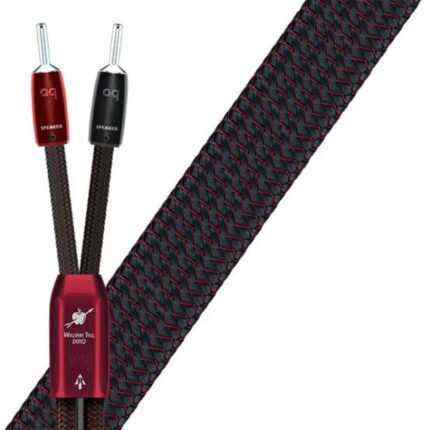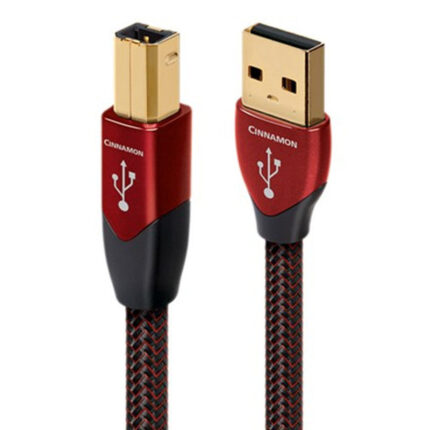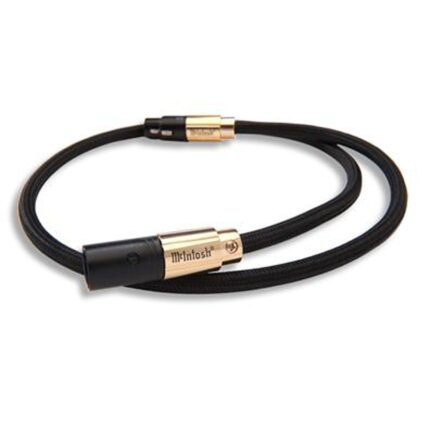

AUDIOQUEST THUNDERBIRD ZERO 2.0m BANSIL
308.990 ден
Designed specifically to optimize the performance of biwireable loudspeakers, ThunderBird ZERO BiWire COMBO speaker cables comprise a ThunderBird ZERO and ThunderBird BASS, conveniently joined at the amp end.
Нема на залиха
Информирајте ме на email кога производот ќе го има на залиха
Solid Perfect-Surface Copper+ (PSC+) Conductors
Solid conductors prevent strand-interaction, a major source of dynamic distortion. Extreme-purity PSC+ solid copper minimizes distortion caused by grain boundaries, and, when direction-controlled for surface asymmetry, facilitates crucial Radio-Frequency Noise-Dissipation.
Carbon-Based Linearized Noise-Dissipation System (NDS)
AQ’s comprehensive Linearized Noise-Dissipation System combines multiple shields and a carbon-based linearized resistive network that turns most of this noise into heat. By ‘linearized,’ we mean that the system is equally effective across extremely wide bandwidth, rather than at selected frequencies only, as is more common. The remaining bad energy is effectively drained away from the sensitive amplifier circuits via directionally controlled signal and shield conductors.
ZERO-Tech
The only complete way to eliminate characteristic-impedance mismatches between a cable and the attached source and load is for the cable not to have any fixed characteristic-impedance value. ZERO-Tech accomplishes this by eliminating interaction between the insulation (dielectric) and the cable’s conductors—enabling uncompressed current transfer. All-important transient current is unrestricted, and RF Noise-Dissipation is linearized (consistent octave to octave).
RF/ND-Tech (BASS CABLE ONLY)
Though a cable’s ground leads are integral to a component’s signal transmission, they also act as an antenna. Thus, they are subject to induced Radio-Frequency (RF) noise. RF noise is a parasitic signal that is typically coupled directly into a system’s most sensitive audio/video circuits. AudioQuest’s RF-on-ground Noise-Dissipation (RF/ND-Tech) greatly reduces resulting distortion and signal masking, yielding unprecedented levels of Noise-Dissipation across the widest bandwidth (range) of radio frequencies possible. Our unique circuit topology uses a common-mode phase-cancelling array, providing linear noise dissipation across the entire length of the cable (US Patent # 8,988,168).
72v Dielectric-Bias System (DBS) with Level-X RF Noise-Trap
Insulation is also a dielectric that acts like a shunt-filter. Properly biasing the dielectric linearizes the filter, significantly improving the cable’s wide-bandwidth ability to dissipate induced noise. The DBS pack’s Level-X Noise-Trap “pulls” RF Noise out of the cable, further reducing attached audio circuit misbehavior.
ThunderBird Bi-Wiring
When possible, running separate cables to the treble and bass “halves” of a speaker significantly reduces distortion. Bi-Wiring keeps the large magnetic fields associated with bass energy out of the treble cable, allowing the delicate upper frequencies to travel a less magnetically disturbed path, like taking the waves out of the water when you swim.
AudioQuest’s RF/ND-Tech (patented RF-Canceling Ground-Noise Dissipation) attracts RF energy away from the amplifier’s output. When properly implemented, Bi-Wiring has always been a cost-effective way to get better performance for the same or less money. With RF/ND-Tech, the advantage of Bi-Wiring is much more dramatic. Because RF/ND-Tech is so effective, BASS model cables are only for 10KHz and below; do not use a BASS cable full-range or on treble.









